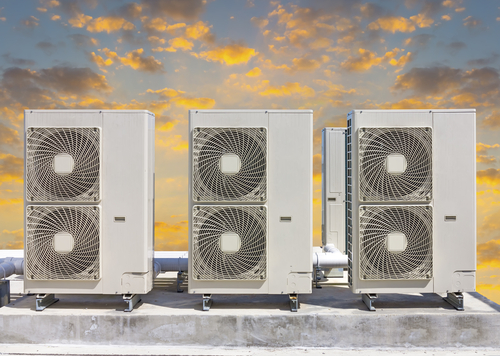Under Section 608 of the CAA, the Environmental Protection Agency (EPA) is required to create regulations covering the use and disposal of ozone-depleting substances (ODS) used as refrigerants, including specific chlorofluorocarbons (CFCs) and hydroclorofluorocarbons (HCFCs). The regulation is titled “National Recycling and Emission Reduction Program” and applies to the service, repair or disposal of appliances and industrial process refrigeration (IPR) equipment including air conditioning.
 |
Section 608 has three subsections:
- Section 608(a) requires the EPA to promulgate regulations to reduce the use and emissions of Class I Substances (CFCs and halons) and Class II Substances (HCFCs) to the lowest possible level while also maximizing the recapture and recycling of the ODSs;
- Section 608(b) requires that regulations created under subsection (a) contain standards for the safe disposal of Class I and Class II Substances; and
- Section 608(c) prohibits anyone from knowingly venting or otherwise releasing or disposing of ODS to the environment, and it also applies to the same for ODS substitutes, unless the EPA Administrator determines that such actions do not pose a threat to the environment.
Deliver fast and effective Environmental, DOT, and OSHA training with Environmental Training Library. Get it Now..
These regulations originated in the early and mid 1990s, and in 2004 and 2005, clarifications were made regarding the venting prohibition and ODS substitutes. Under those clarifications, only a handful of ODS substitutes were exempted from the venting prohibition and included, ammonia, hydrocarbons, chlorine, carbon dioxide, nitrogen, and water, as well as de minimis releases associated with good-faith attempts to recycle or recover refrigerants or non-exempt substitutes.
To further add to the list of safer ODS substitutes, the EPA’s Significant New Alternatives Policy (SNAP) Program has been evaluating and regulating up-and-coming substances with considerable success. Effective June 23, 2014, the EPA promulgated another Final Rule that revises the venting prohibition exemption to include:
- Isobutane (R-600a) and R-44IA (a hydrocarbon blend) as refrigerant substitutes in household refrigerators, freezers and combination refrigerators and freezers, and
- Propane (R-290) as a refrigerant substitute in stand-alone retail food refrigerators and freezers.
Train Better in 2014
Environmental Training Library combines an extensive library of prewritten environmental training materials developed by BLR’s experts.Get it Now.
According to the Final Rule, the EPA has determined that the release of the three refrigerant substitutes does not present a threat to the environment, considering the limited quantities used in the applications and the current controls and practices in place.
What does this mean for industry? In its review of the Final Rule under the Regulatory Flexibility Act (RFA), the EPA assessed the impact on small businesses engaged in the repair and maintenance of appliances (NAIC code 811412) with annual receipts of less than $14 million, scarp yards (NAIC code 562920) with fewer than 100 employees, and merchant wholesale distribution of industrial scrap and other recyclable materials (NAIC code 423930) with annual receipts of less than $12.5 million. As far as adverse impacts are concerned, the EPA states that “the rule will not have a significant impact on a substantial number of small entities.”
More significantly to many, however, the Agency also noted that because the regulation is “primarily deregulatory” and would thus exempt persons from the venting prohibition under Section 608(c), the Final Rule will actually “relieve (the) regulatory burden for all affected small entities.”
